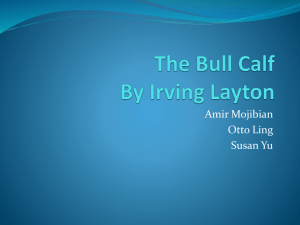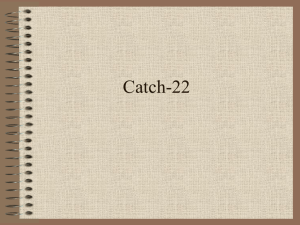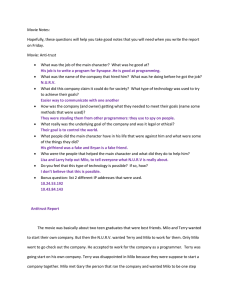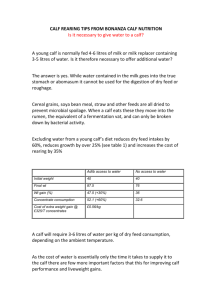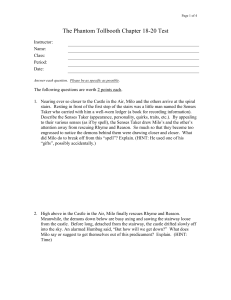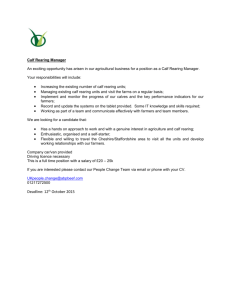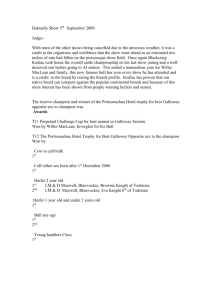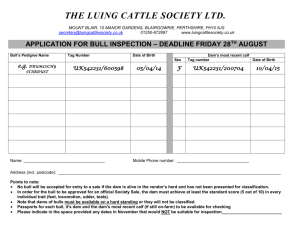College Bound Math Problems #21
advertisement
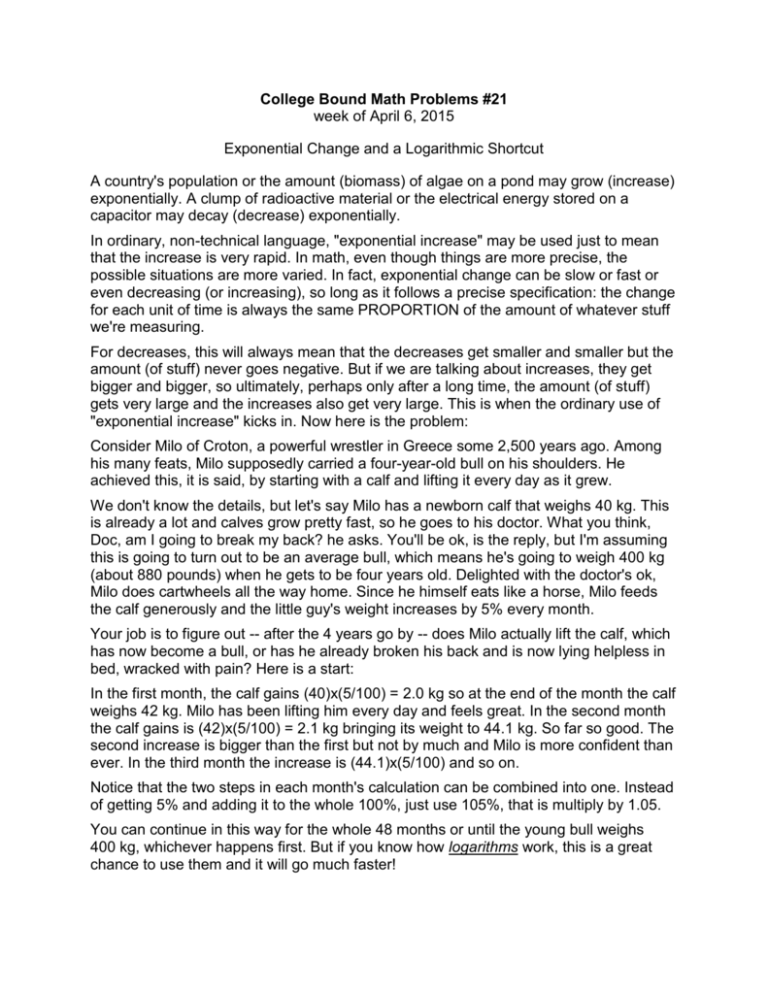
College Bound Math Problems #21 week of April 6, 2015 Exponential Change and a Logarithmic Shortcut A country's population or the amount (biomass) of algae on a pond may grow (increase) exponentially. A clump of radioactive material or the electrical energy stored on a capacitor may decay (decrease) exponentially. In ordinary, non-technical language, "exponential increase" may be used just to mean that the increase is very rapid. In math, even though things are more precise, the possible situations are more varied. In fact, exponential change can be slow or fast or even decreasing (or increasing), so long as it follows a precise specification: the change for each unit of time is always the same PROPORTION of the amount of whatever stuff we're measuring. For decreases, this will always mean that the decreases get smaller and smaller but the amount (of stuff) never goes negative. But if we are talking about increases, they get bigger and bigger, so ultimately, perhaps only after a long time, the amount (of stuff) gets very large and the increases also get very large. This is when the ordinary use of "exponential increase" kicks in. Now here is the problem: Consider Milo of Croton, a powerful wrestler in Greece some 2,500 years ago. Among his many feats, Milo supposedly carried a four-year-old bull on his shoulders. He achieved this, it is said, by starting with a calf and lifting it every day as it grew. We don't know the details, but let's say Milo has a newborn calf that weighs 40 kg. This is already a lot and calves grow pretty fast, so he goes to his doctor. What you think, Doc, am I going to break my back? he asks. You'll be ok, is the reply, but I'm assuming this is going to turn out to be an average bull, which means he's going to weigh 400 kg (about 880 pounds) when he gets to be four years old. Delighted with the doctor's ok, Milo does cartwheels all the way home. Since he himself eats like a horse, Milo feeds the calf generously and the little guy's weight increases by 5% every month. Your job is to figure out -- after the 4 years go by -- does Milo actually lift the calf, which has now become a bull, or has he already broken his back and is now lying helpless in bed, wracked with pain? Here is a start: In the first month, the calf gains (40)x(5/100) = 2.0 kg so at the end of the month the calf weighs 42 kg. Milo has been lifting him every day and feels great. In the second month the calf gains is (42)x(5/100) = 2.1 kg bringing its weight to 44.1 kg. So far so good. The second increase is bigger than the first but not by much and Milo is more confident than ever. In the third month the increase is (44.1)x(5/100) and so on. Notice that the two steps in each month's calculation can be combined into one. Instead of getting 5% and adding it to the whole 100%, just use 105%, that is multiply by 1.05. You can continue in this way for the whole 48 months or until the young bull weighs 400 kg, whichever happens first. But if you know how logarithms work, this is a great chance to use them and it will go much faster!

